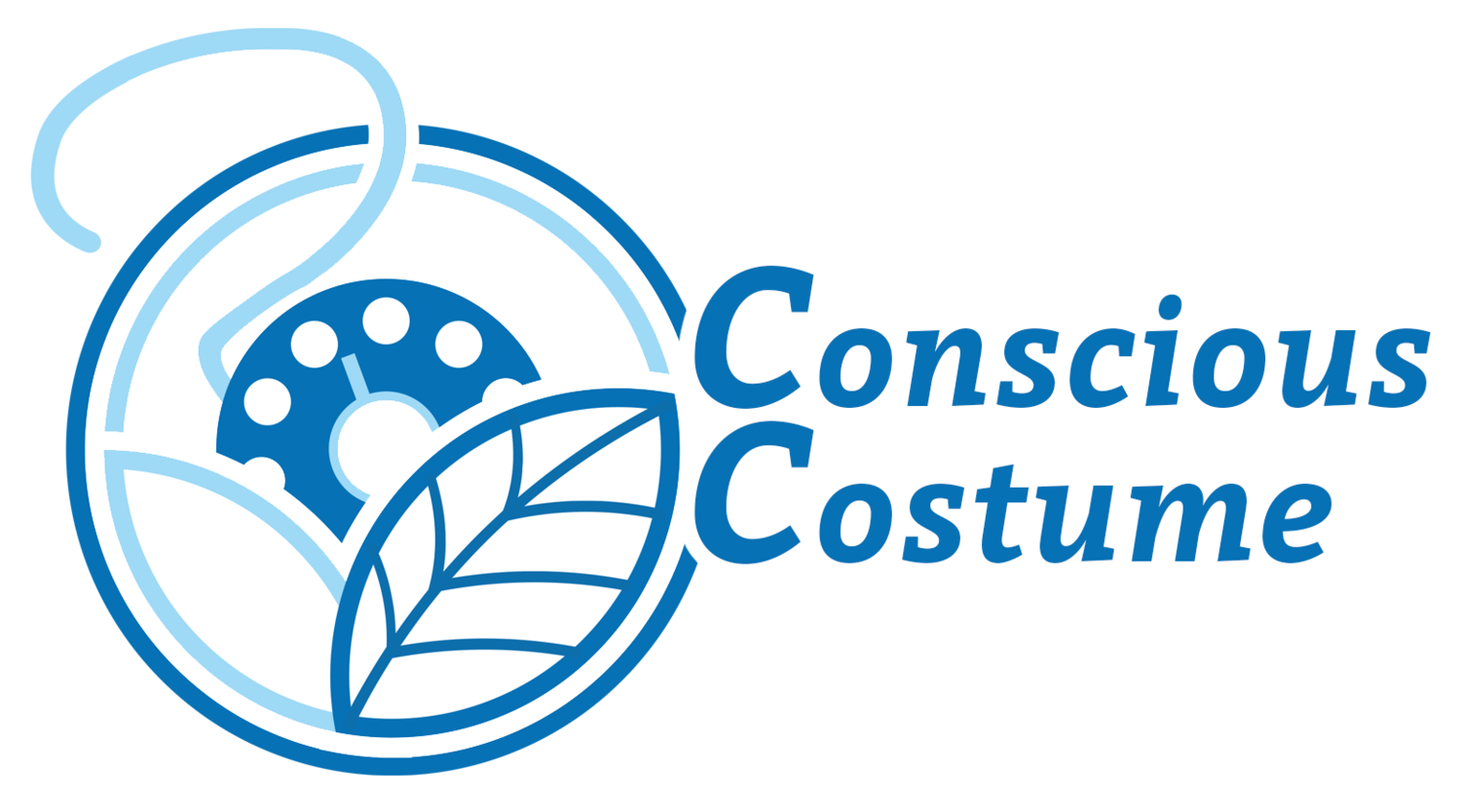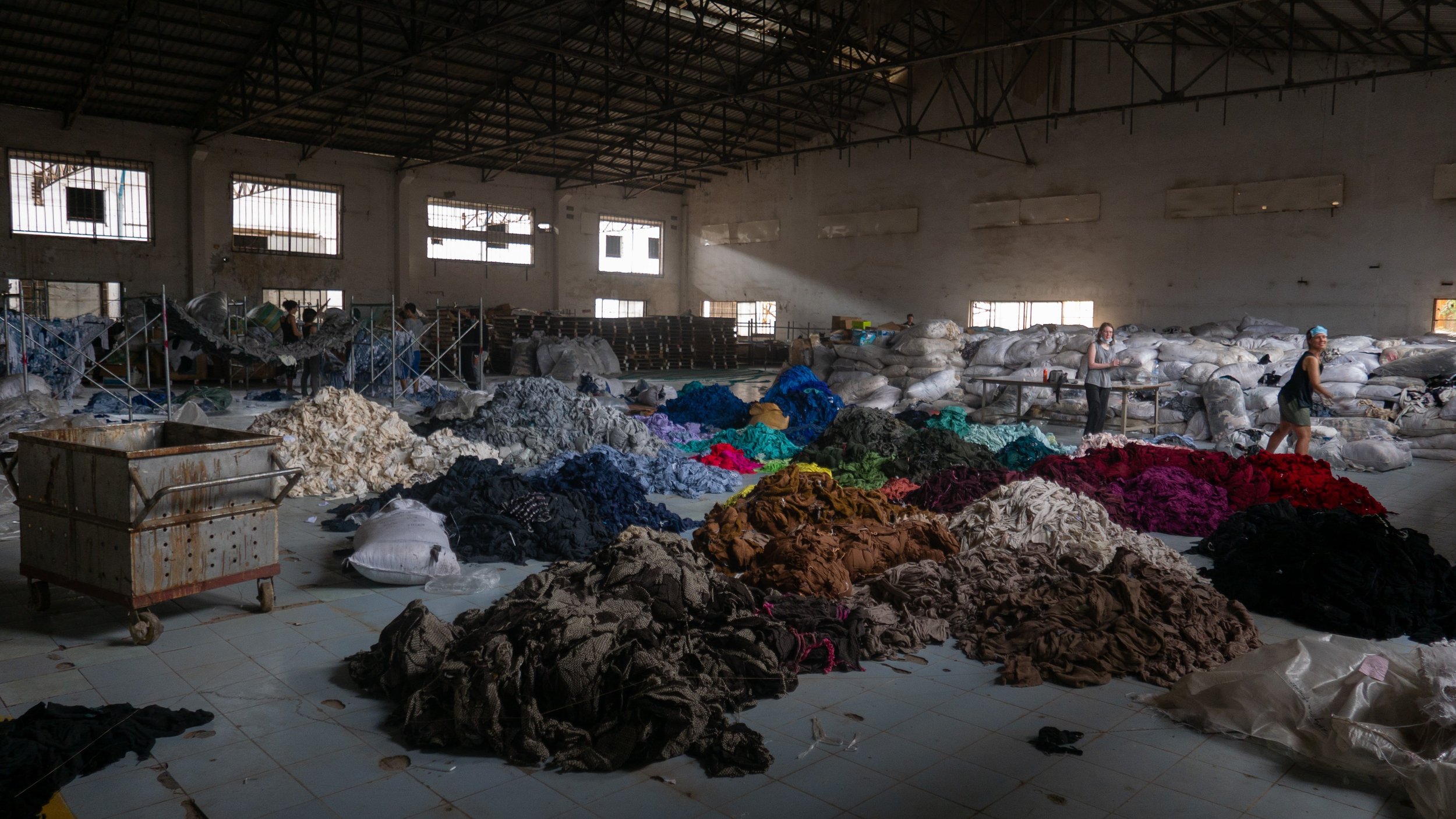By: Kristen P Ahern
Photo by Francois Le Nguyen on Unsplash “Sorting through hundreds of tons of clothing in an abandoned factory for a social mission called Clothing the Loop.”
Often Conscious Costume focuses on solutions and hope, uplifting the art we do to the level of activism and having an impact on our world. However, it’s also important to understand why conventional costume production is problematic given our relationship with the global textile and fashion industry. CC sees the role of the costume professional as stewards of materials, one step in the complex supply web, one moment in the journey of that material from its creation to the moment that it returns to the earth as either a nutrient or a poison.
We are grateful for the many organizations who have done fantastic work in researching the harms and potential solutions to the global fashion market. They have created articles and resources to help us (and you!) understand the problem. We hope this provides a digest of fast facts to help you make educated decisions in your own practice and advocate for better institutional solutions.
PART 1: THE PROBLEM
There is power in data. There is clarity in understanding the scale of the global fashion and textile industry, their impact on the environment, and our place in it. Here are a few fast facts to help understand and communicate the urgency to more ethical costume production.
Photo by Rio Lecatompessy on Unsplash.
Water Use
1 pair of conventional jeans takes over 2,000 gallons of water to make
Land Use
“The fashion industry’s footprint goes back into the climate crisis in a way that disproportionately affects black and brown communities both in the states and globally, based on the structural racism of positionality and the systems of lack of information and protection,” Dominique Drakeford
Natural fibers like cotton rely extensively on chemical fertilizers and pesticides, which can harm soil and water nearby.
“More than 120 million trees are cut down each year to make our clothing.”
Labor Issues
“An Oxfam 2019 report found that 0% of Bangladeshi garment workers and 1% of Vietnamese garment workers earned a living wage.”
Buying US made garments is not a solution to labor concerns of buying garments from overseas, workers in LA still often work for just 5 or 6 cents per garment, meaning they would have to produce 300 pieces in an hour in order to make the local minimum wage of $15/hour.
Many garment making facilities are notoriously unsafe places to work.
Packaging
Poly bags that your clothing comes in are rarely recycled but a vital part of the fashion supply chain that protects clothing from costly damage and waste.
Returns
Overbuying is a common practice in costume production but most clothing returned online is not resold to another consumer and often it ends up thrown away.
Synthetic Fibers
“…about 60 percent of the material that makes up our clothes worldwide” is plastic based
“One 2011 paper found 1,900 fibers could be released from a single synthetic garment in a wash” These plastic microfibers are extremely damaging to marine environments.
Modal is often celebrated as an eco friendly synthetic fiber, however this material is made from trees (often from plantations that clear-cut natural jungle in favor of timber farming), and chemically intensive to process.
Textile waste
Textile recycling is energy intensive and often “downcycles” the fiber rather than “recycling” it because it becomes a lower quality product with less reusability after this process (fiber fill, rags, etc…)
“More than 15 million tons of used textile waste is generated each year in the United States, and the amount has doubled over the last 20 years.”
“According to the EPA Office of Solid Waste, Americans threw away about 65 pounds of clothing per person in 2015. That adds up to about 16 million tons of clothing and textiles every year.”
Emissions
“...the fashion industry contributes approximately 2.1 billion tonnes of greenhouse gas emissions in a single year, equivalent to 4% of all global emissions.”
Dye
“During the dyeing process, up to 80% of pigments are retained and the remainder are flushed out, causing 40,000-50,000 pounds of dye to enter into the water system each year.”
Shopping second hand problems
“As thrifting reaching new levels of popularity, troves of people are noticing a rise in prices at their local thrift stores. This can take a serious toll on the folks who rely on the used market for everyday wear.”
Thrifting with the intention to alter can also limit the already limited options for plus size shoppers.
Thrift stores benefit from fast fashion “We can swap out our entire wardrobe by dumping what we don’t want at a second-hand store with the hopes that it’ll be put to good use. Instead of buying less, we trick ourselves into thinking we can shop our way out of the problem by donating again and again.” But the reality is that only 10-20% of what gets donated, ends up on the thrift store rack. “The remaining 80 percent is shipped to other countries like Poland, Pakistan, and Kenya or turned into rags or post-consumer fiber.”
A lot of so called “Deadstock” fabric is just planned overproduction that goes to “Jobbers” or stores, one of the best known of these is Mood Fabric in New York.
Photo by Becca McHaffie on Unsplash
PART 2: QUICK SOLUTIONS
Often we are asked for the “tips and tricks” version of rethinking our approach to costume production. We see buying “better” fibers and brands or finding solutions for textile waste to be Step 1 of a Conscious Costume journey. Ultimately we’d like to reexamine the cycle of materials and the relationship between theatre design and the extractive and capitalist system. But, these are great places to start:
Natural fibers are a great solution because they do not require petrochemicals to make and they will eventually biodegrade. However like everything, buying natural is not a perfect solution and there are potential pitfalls, learn more here.
Organic Cotton is one of the darlings of solutions, and though it has a lower environmental impact, much more land is needed to produce the same amount of cotton because the yield is lower.
Natural dyes are made from natural materials and don’t use heavy metals or toxic chemicals in the dying process so they are better for local health (and likely for the wearer).
Shop Second Hand. Though above, we tried to demonstrate why shopping second hand is not a silver bullet for fixing our impact on the planet, there are some distinct advantages and it’s a great thing to incorporate into your practice.
“...extending the average life of clothes by just three months of active use per item would lead to a 5 to 10 percent reduction in each [item’s] carbon, water and waste footprints,”
“...quadrupling the average life span of these items resulted in a 75 percent savings in freshwater used for dyeing and other processes.”
Worried that your thrifting is just supporting for-profit organizations making money off of other people’s garbage? Check here for charitable thrift stores.
For shopping new, head over to Good on You or some of the many other guides to better understand which shopping option is right for you! They have a great primer on getting into ethical and sustainable clothes shopping.
Fabric recycling: But for now, having any sort of recycling plan is vitally important. Materials we don’t use, extras, things that get damaged, or just costumes once a production closes. In the next section, we will dive deeper into more community oriented circular solutions.
Donate to a thrift store
Donate to a Creative Reuse Center
Post in your Buy Nothing Group or Freecycle
Textile recycling: For Days’ Take Back Bag will take back all textiles, no matter how small, and you get a store credit.
Photo by Markus Spiske on Unsplash
PART 3: REVOLUTION
What we really need is to radically rethink our approach to costume materials. Conscious Costume is most focused on advocating for and facilitating more circular material use. We take inspiration from some amazing artists and academics who have been working in this space for far longer than we have
Look for a more detailed examination of the costume revolution in a future blog post but for now, chew on these other resources to get an understanding of our inspirations and learn some of the terminology we’ll be using.
Photo by Francois Le Nguyen on Unsplash
And for those readers who want extra credit and want to understand more about the issues in the current fashion and textile industries, we highly recommend doing a deep dive into the following reports:
Kristen is the founder of Conscious Costume and a designer, activist, organizer, and educator in the Chicago area.

















